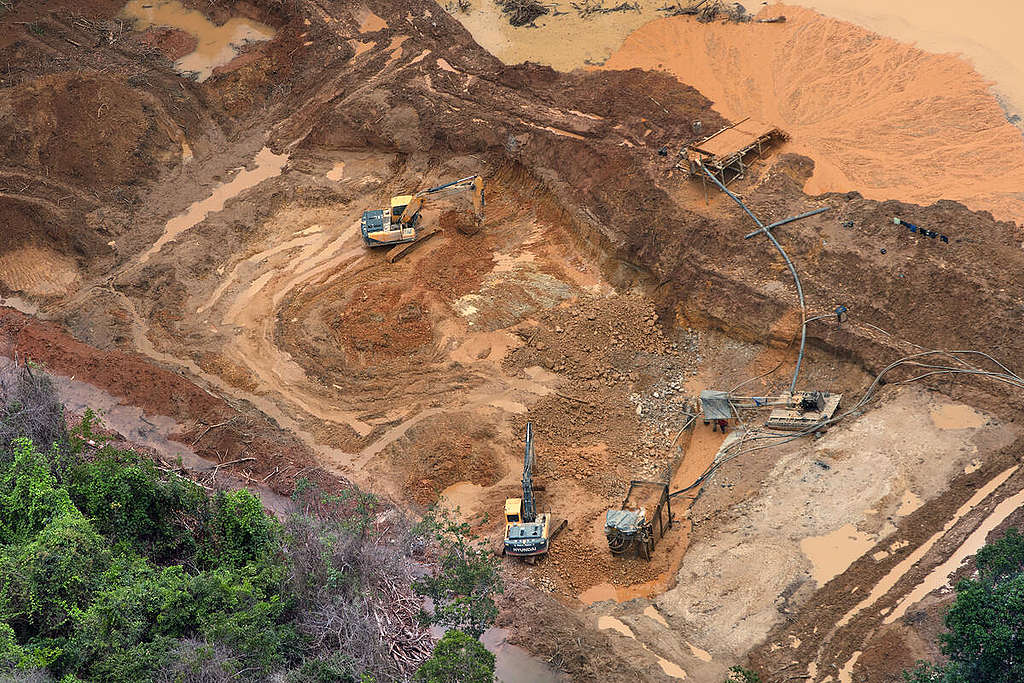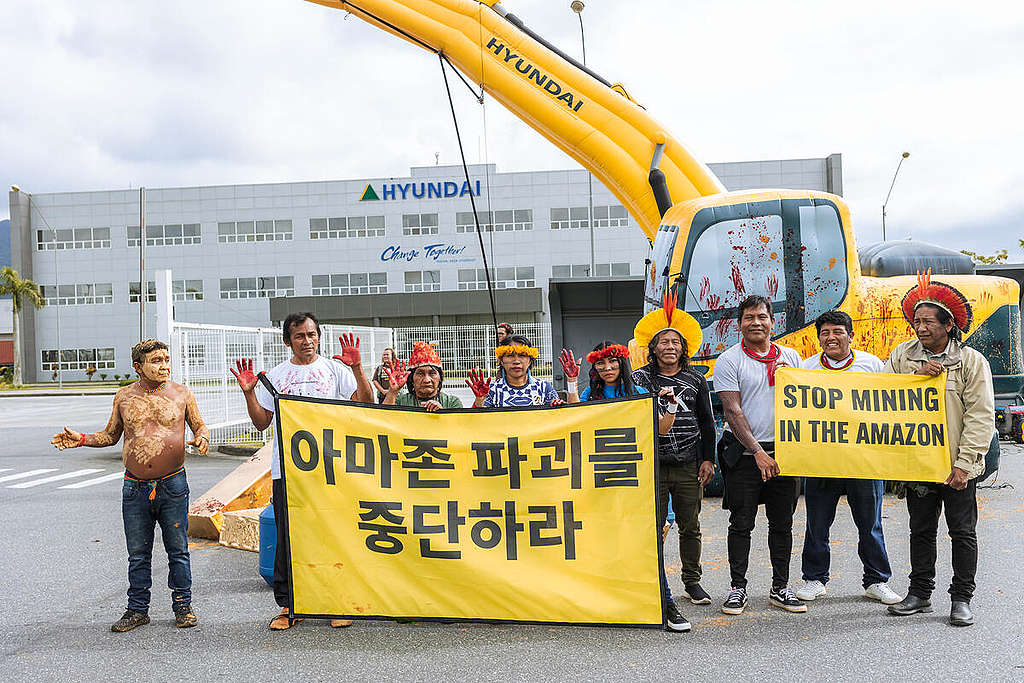It took me more than 25 hours to travel from my home, in the Pará state in Brazil, all the way to South Korea. I came here to explain how illegal gold mining in the Amazon is threatening the world's biggest rainforest and the lives of thousands of people, especially the Kayapó, Munduruku and Yanomami Indigenous Peoples. Perhaps most importantly, I came here to explain why people here, on the other side of the planet, should care about this destruction.
Illegal mining in the Amazon isn't a new issue. In the last 36 years, the area destroyed by gold mining in Brazil grew by more than 1,000%. In 2021, it had already destroyed more than 200,000 hectares. But, in the last decade, one key element has exponentially increased the level of destruction caused by the activity, expanding to the heart of the Amazon, especially to Indigenous Territories: hydraulic excavators. Just one of these machines can, in a matter of hours, do the work that would take three individuals 40 days to complete. And they are taking over the mining activity in the forest.

According to an investigation produced in partnership between Greenpeace Brazil and Greenpeace East Asia, dozens of excavators have been operating in illegal mines on the Kayapó, Munduruku and Yanomami Territories. Between 2021 and 2023, 176 machines were recorded on those Lands. Out of those, 75 were produced by Korean-based Hyundai Construction Equipment's subsidiary in Brazil. The investigation also identified Hyundai's authorized dealers have recently established facilities in the vicinity of those Indigenous Lands. This is not a coincidence. Hyundai's excavators are being sold to miners illegally exploring Indigenous Lands, an activity that is prohibited by the Brazilian Constitution.
Out of all the forest land destroyed by illegal gold mining in Indigenous Lands, more than 95% were in the Yanomami, Kayapó and Munduruku Territories. These Peoples are being forced to live with thousands of miners who spread diseases, destroy rivers, and the forest; and whose illegal pursuit of profits also leads to widespread mercury contamination.

The expansion of mining is a threat to the Amazon, the largest rainforest in the world, and is aggravating the loss of biodiversity, of the ancestral knowledge of Indigenous Peoples and is contributing to the global climate crisis. For this reason, we must prevent excavators from continuing to be used in the expansion of mining in the Amazon, especially within Indigenous Lands.
The excavator manufacturers already have the technologies to remotely monitor and block functions of this equipment. These technologies can be useful to alert the authorities, whenever a machine crosses over the limits of Indigenous Lands and other protected areas in the Amazon.
Hyundai is not the only manufacturer to have excavators being used in illegal gold mining in the Amazon, but it is the brand with the highest number of machines caught in the activity on the Kayapó and Munduruku Indigenous Lands.
We believe that Hyundai can set an example for other companies to adopt best practices to ensure the protection of the Amazon, Indigenous Peoples, and the global climate.
Tell Hyundai to take a stand to protect the Amazon and its Peoples, and use its technology to prevent its excavators from ending up in the illegal gold mining that is spreading across the Amazon.
Danicley de Aguiar is a senior Amazon campaigner for Greenpeace Brazil.






